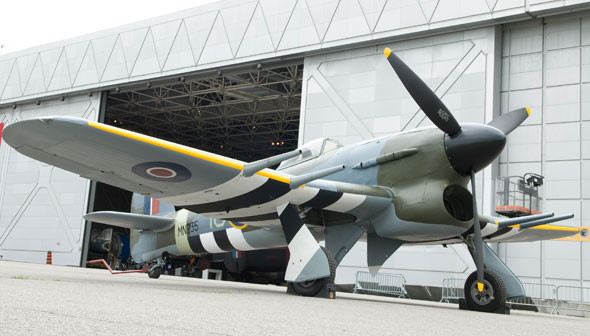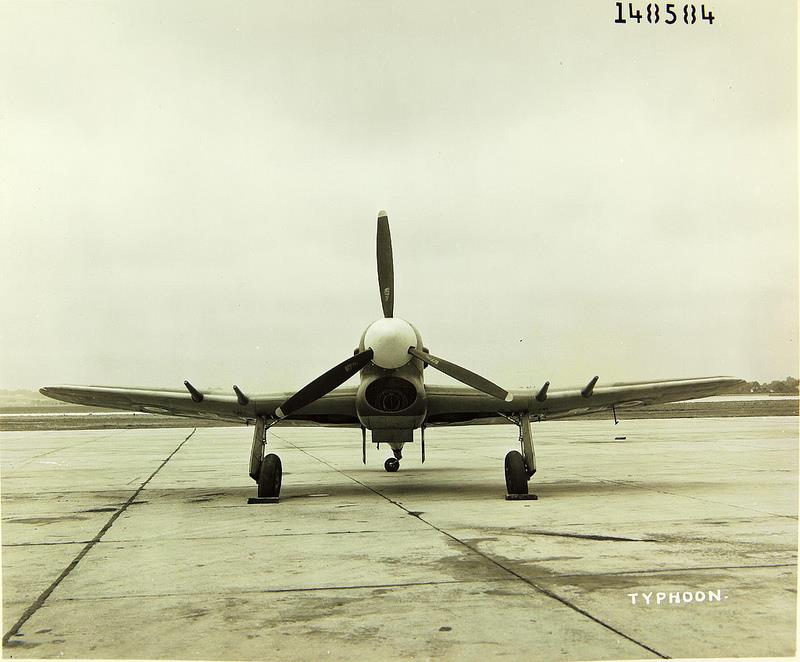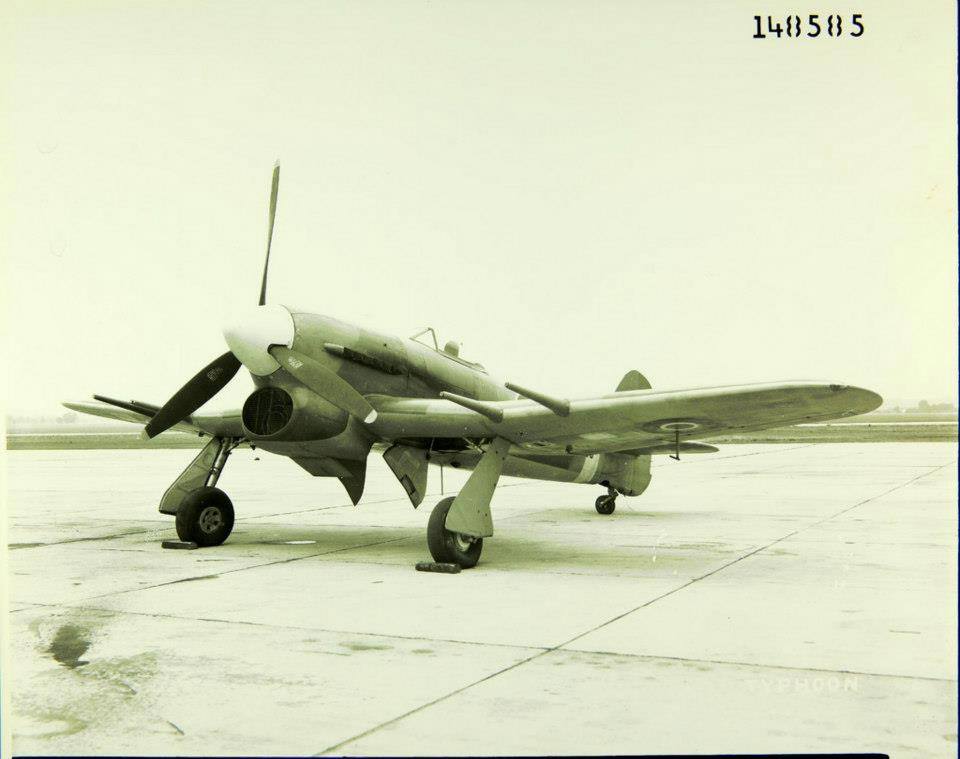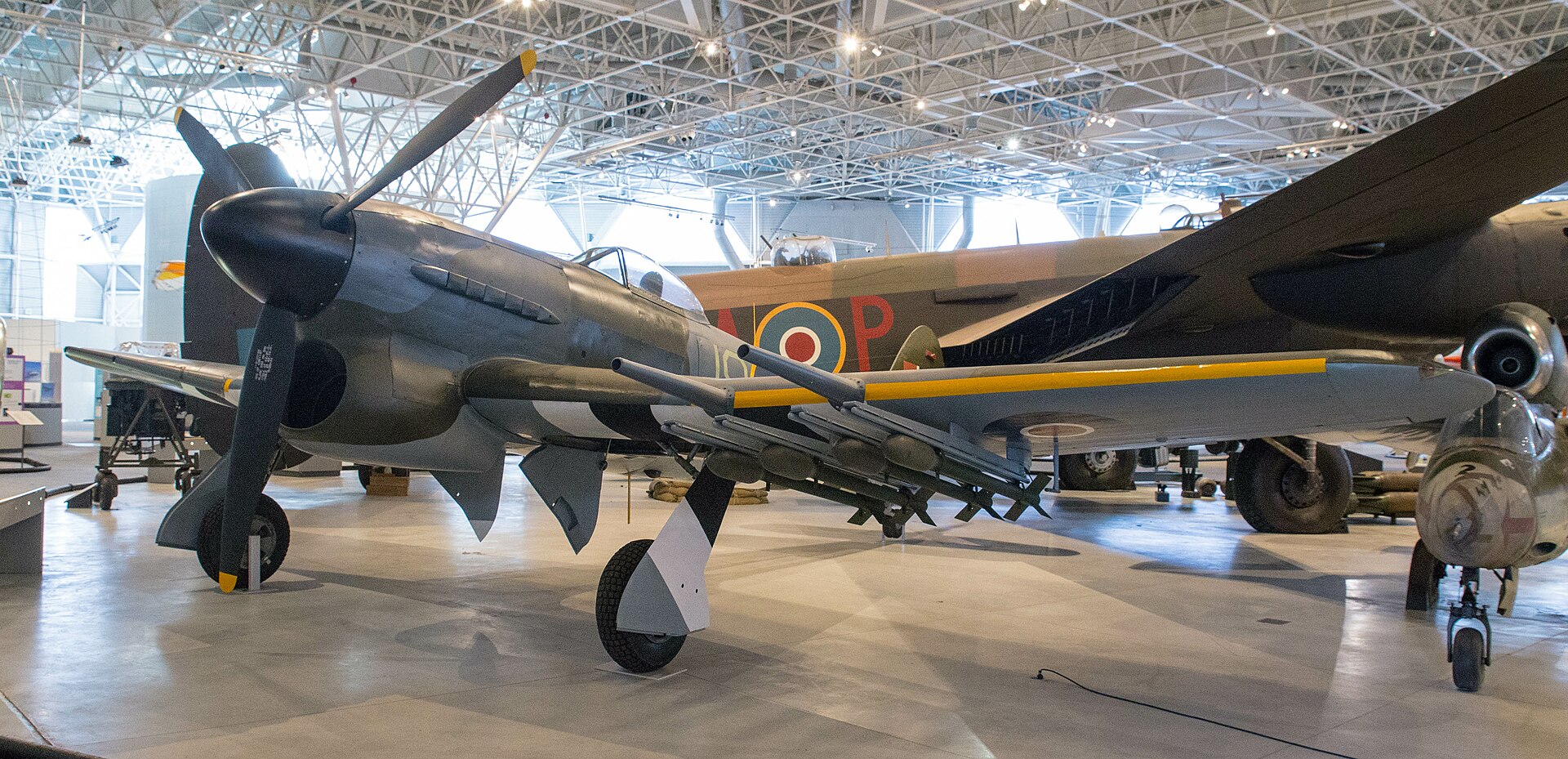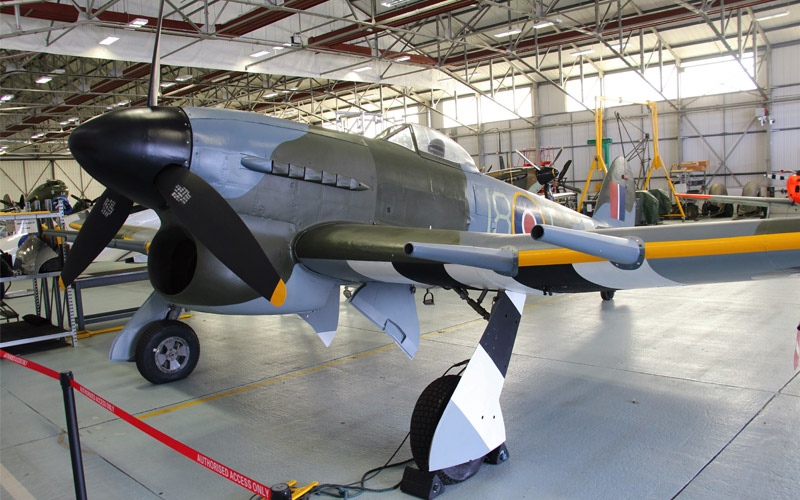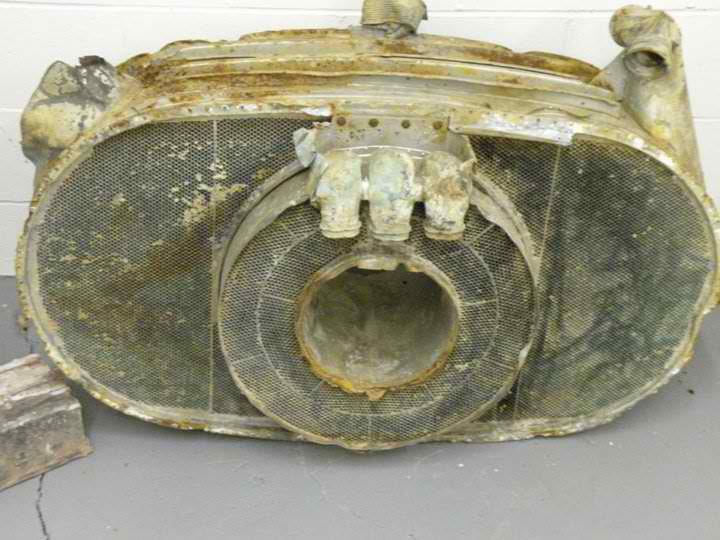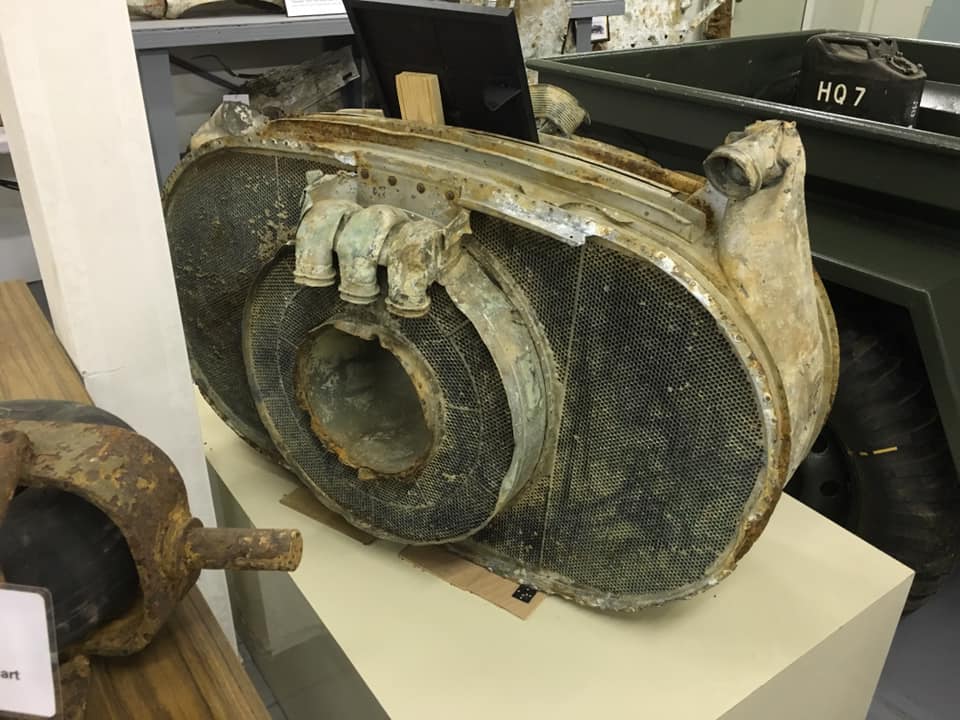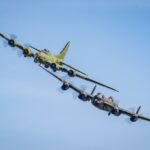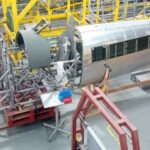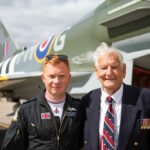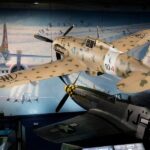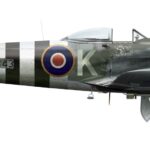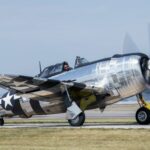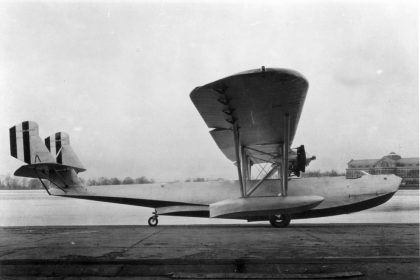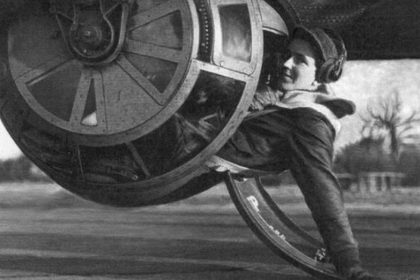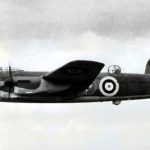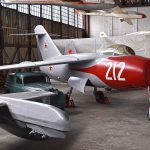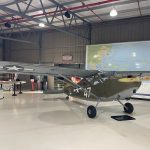For more than eight years now, we at Vintage Aviation News have been extensively covering the efforts of the Hawker Typhoon Preservation Group to rebuild Typhoon Mk.IIb RB936 back to airworthy condition (see article list here). We have also covered the restoration of Mk.Ib JP843 in British Columbia here. But these restoration efforts would have had far more of their work cut out for them were it not for the sole complete surviving “Tiffie,” Mk.IB MN235, which can be seen today at the Royal Air Force Museum’s London annex at the former RAF Hendon. Yet with all intact Typhoons having been scrapped shortly after Victory in Europe, how did MN235 survive to the present day? The answer lies not in the United Kingdom, but in the United States, where the aircraft spent over 20 years before returning to Europe. This is how a British Typhoon came to America.
Much of the history of MN235 has been established by Andrew Simpson, Curator of the Department of Aircraft and Exhibits at the RAF Museum, who created several official record cards for the aircraft at the RAF Museum, including the museum’s Typhoon. The protagonist of our story, so to speak, began life like most other Tiffies, being built in the Gloster Aeroplane Co Ltd factory in Hucclecote, Gloucester, which was contracted along with Avro to build the vast majority of Hawker Typhoons so that the original designers could focus on the production of Hawker Hurricanes and develop the Tempest. Receiving the construction number 153219, it was part of the 5th production batch of 800 Typhoons from RAF serial numbers MN229 through MN269, with No. 153219 receiving the RAF serial MN235, being just the seventh aircraft of this particular batch. From there, MN235 completed its first test flight on February 8, 1944, piloted by Squadron Leader Allan H. Smith DFC from New Zealand, who was serving as a test pilot for Gloster after being rotated from his first tour of duty with No 486 Squadron RNZAF. In the logbook for MN235, he noted that he flew the aircraft for 40 minutes and wrote “off-test,” signifying he felt it was ready for immediate delivery to the RAF with no need for another test flight in Gloucester. Later, S/L Smith would go on to become the commanding officer of No 197 Squadron RAF from July 1944 until he was shot down by flak on December 31, 1944 over Holland. Upon being forced down, he was captured by the Germans and spent the rest of the war as a POW.
From there, MN235 was delivered to No 51 Maintenance Unit (MU) at RAF Lichfield on February 16 for storage. At this same time, the US Army Air Force wanted to evaluate the performance of the Hawker Typhoon and compare its performance against American fighters. Being a brand-new airframe, MN235 was selected for flight testing in the United States. On March 12, 1944, MN235 was transferred to RAF Sealand, Wales, about 13 miles from Liverpool. There, personnel of No.47 MU oversaw its packing, and twelve days later, on the 24th of March, MN235 was loaded aboard the steamship American Manufacturer, bound for New York, where it would arrive on April 16. By May 6, 1944, MN235 arrived at Wright Field, Dayton, Ohio, where its flight evaluations would be carried out.
While at Wright Field, as it was being tested by the Foreign Equipment Branch of the Army Air Force’s Air Technical Service Command, it was issued the code FE-491. However, after only nine hours logged on the aircraft, FE-491 was damaged in a minor accident, though records that specify exactly what happened to FE-491 remain elusive. What is known, however, was that the aircraft was initially stored at Wright Field before being moved to Freeman Army Airfield near Seymour, Indiana, and was there before the end of 1945, but no further test flights were carried out.
The end of WWII would see the start of a scrap drive to reclaim the metal from aircraft, tanks, and ships, and recycle it for peacetime purposes, just as civilians had been urged to participate in scrap drives to help build the weapons of war. Yet a few forward-thinking individuals realized that if certain aircraft were not selected for preservation, they would certainly fall to the scrapper’s torch. One of these men was Chief of Staff of the Army Air Force, General Henry “Hap” Arnold. Under his direction, a number of U.S. and foreign aircraft were selected for preservation, and the Hawker Typhoon, having been redesignated as T2-491, was among the aircraft selected, and was shipped to a disused Douglas C-54 plant at Orchard Place Airport in Chicago (now O’Hare International Airport). On January 3, 1949, the aircraft was formally transferred from the US Air Force to the Smithsonian’s National Air Museum. As early as 1946, when the museum was founded, its head curator Paul E. Garber had worked with General Arnold to select which aircraft should be set aside for preservation. In 1951, however, the US Air Force evicted the Smithsonian from the old C-54 plant due to the wartime needs during the Korean War, and Garber was forced to select a new storage location closer to Washington, D.C. He found it in Suitland, MD, where the Silver Hill/Paul E. Garber Storage Facility now stands today, and MN235 would be placed in storage there for the next fifteen years or so.
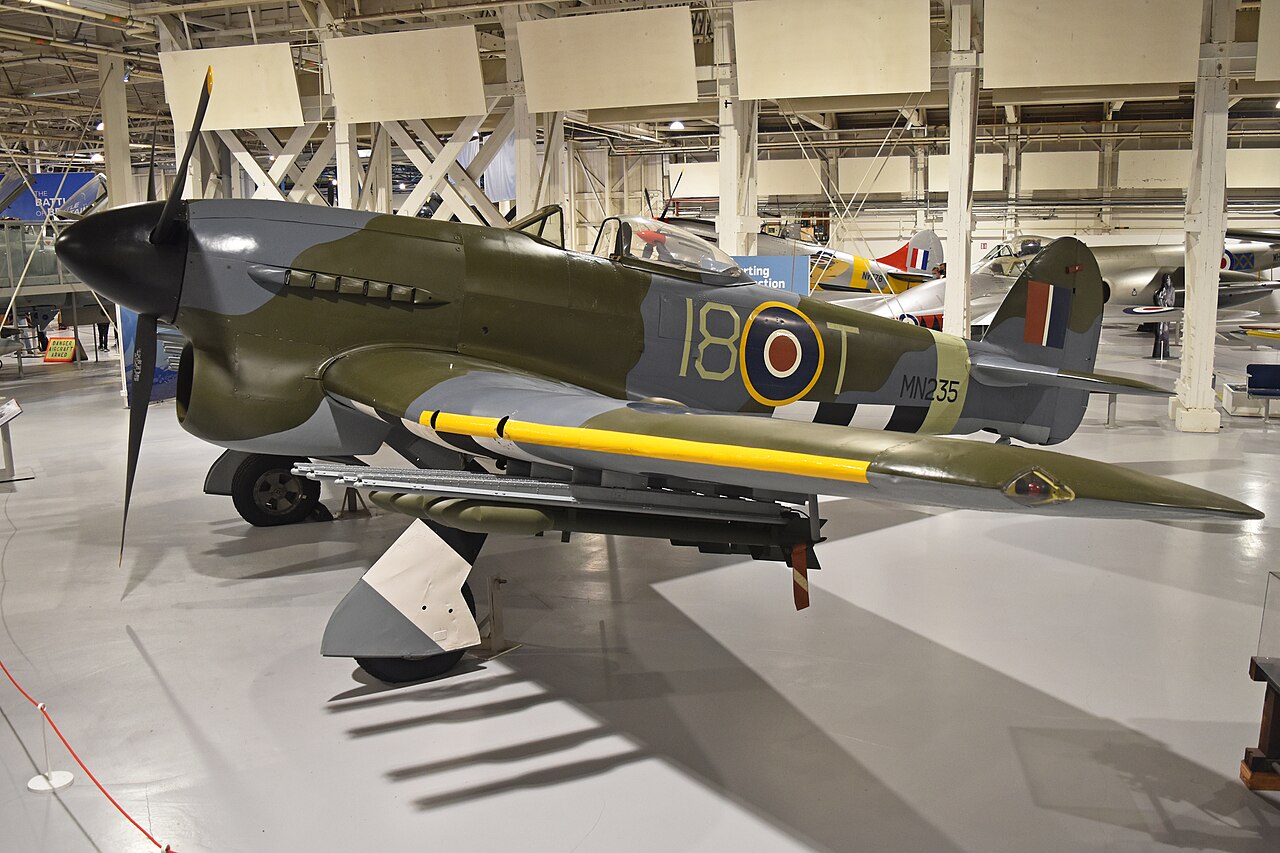
By 1967, the Royal Air Force Museum (RAFM) was seeking to commemorate the upcoming 50th anniversary of the RAF’s founding, and it was known that MN235 was now the world’s last known surviving Hawker Typhoon. In April of that year, the RAFM requested that the National Air and Space Museum (NASM) permanently transfer Typhoon MN235 to their collection. Noting its significance to the RAF, officials at the Smithsonian agreed, and in July of that year, MN235 was presented to the RAFM by the NASM. In January 1968, Typhoon MN235 crossed the Atlantic once again, this time aboard the S.S. Samaria, steaming from Baltimore to Liverpool. From there, MN235 was shipped by road from Liverpool to 71 MU, RAF Bicester to survey the amount of work needed to restore the Typhoon for display. At the same time, the RAFM selected an aircraft to send to the Smithsonian in place of the Typhoon. This would be Hawker Hurricane Mk.IIc, RAF serial LF686/5720M, which is today displayed at the National Air and Space Museum’s Steven F. Udvar-Hazy Center in Chantilly, VA.
On April 9, 1968, MN235 was transported to No 27 MU, RAF Shawbury for restoration beginning on April 26. Before the restoration, the aircraft was noted to be lacking numerous items. These included one of the four Hispano 20mm cannons, the propeller spinner, most of the engine cowlings, the right aileron, parts for the landing gear/undercarriage, the entire radiator, oil cooler, and numerous panels, but otherwise, with the exception of some light corrosion, the aircraft was in good condition.
From there, the restoration began in earnest, and missing parts began to be replaced. The missing cannon was easily replaced by the addition of one already in the RAFM collections, the missing spinner was substituted by a modified one from a Handley-Page Hastings transport, and the largely civilian team working with 27 MU fabricated the missing panels. The radiator was replaced with one from a Bedford lorry (truck) that was cut-down to resemble the Tiffie’s radiator. Though the incomplete state of the aircraft delayed a couple of public debuts that the team hoped to attend, MN235 was completed on November 18, 1968, and was formally presented to the Royal Air Force Museum, represented by Dr. John Tanner, by Wing Commander D.A, Gifkins, the commanding officer of No 27 Maintenance Unit. But as the RAFM was still without a public location, Typhoon MN235 remained in storage at RAF Shawbury until 1972, when it was moved to Hendon, London for the opening of the RAF Museum’s location there, where it was placed on display in Fighter Hall. In 1994, the aircraft had D-Day invasion stripes painted on it to commemorate the 50th anniversary of the Allied effort to liberate Europe.
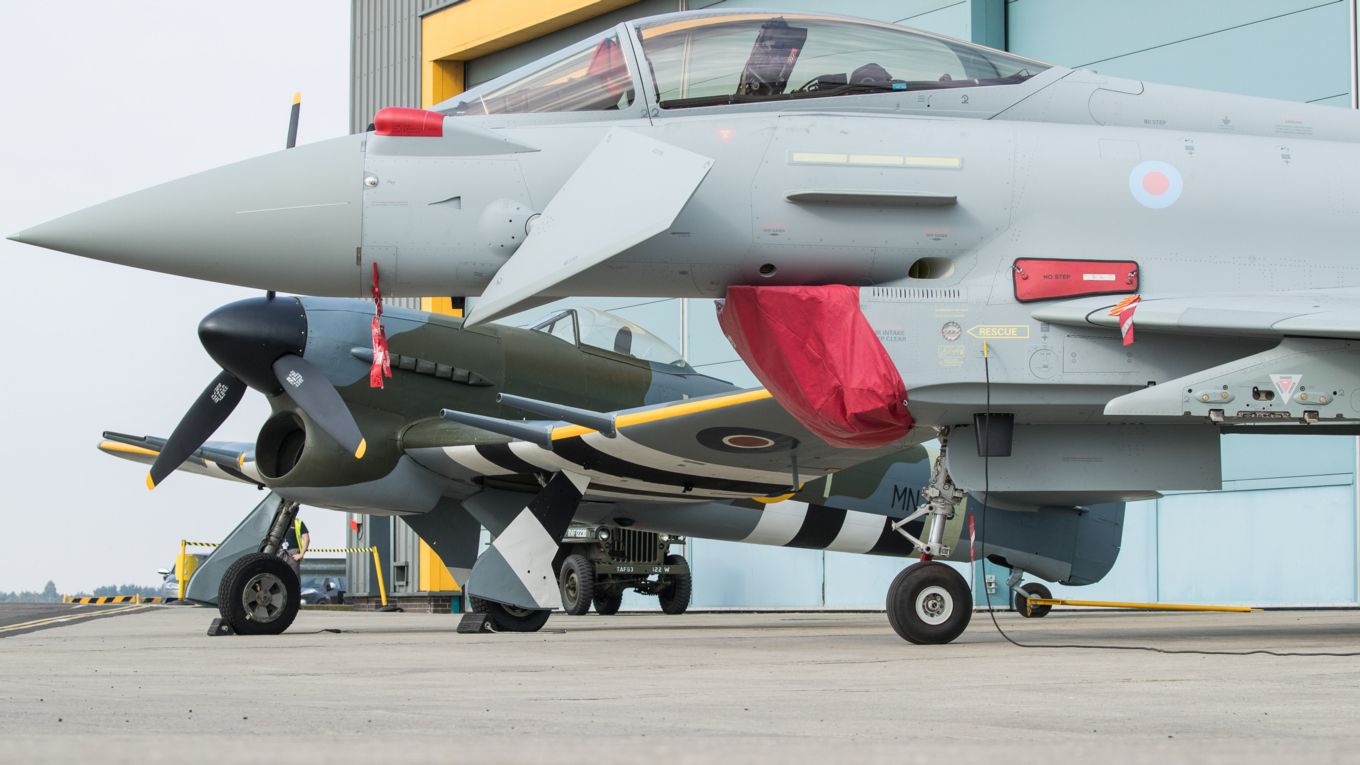
In November 2013, the aircraft was removed from display at Hendor for shipment to the RAF Museum’s Midlands location in Cosford to evaluate its condition, and in doing so revealed that the original paint under the cannon fairings still remained. This consisted of yellow paint applied to the leading edges of the wings for identification purposes. While certainly not unique to the Typhoon, the initial operational record of the Typhoon has several incidents in which Typhoons were mistaken for Focke Wulf Fw 190s, and paint traces of the original black underside stripes were also revealed.
Meanwhile, at the former Freeman Army Airfield (now Freeman Municipal Airport), rumors of buried airplanes lead to discoveries of numerous parts for various aircraft of German, Japanese, Italian, and British origin that were found buried on the airport grounds by the Freeman Field Recovery Team and the Freeman Army Airfield Museum, who went out with metal detectors to areas where eyewitnesses reported seeing materials buried before the military left the airport. Among these were components for a Hawker Typhoon likely either directly removed from MN235 while serving as FE-491 or as the accompanying stock of parts to maintain it, including the original radiator. Once the Freeman Army Airfield Museum got in touch with the RAF Museum, the original radiator and other spare parts returned to the UK to be cleaned and returned to the Typhoon. But the following year, in 2014, MN235 would make another trip across the Atlantic (see artile here), this time to the Canada Aviation and Space Museum in Rockcliffe, Ottawa (article here) where it would be displayed while on loan from the RAF Museum it returned to Hendon in 2018 (article here), where it remains today. While there are the aforementioned projects to return Typhoons RB936 and JP843, MN235 remains the last remaining original and complete Hawker Typhoon, and remains a reference for the restoration crews to assist in their own projects.







